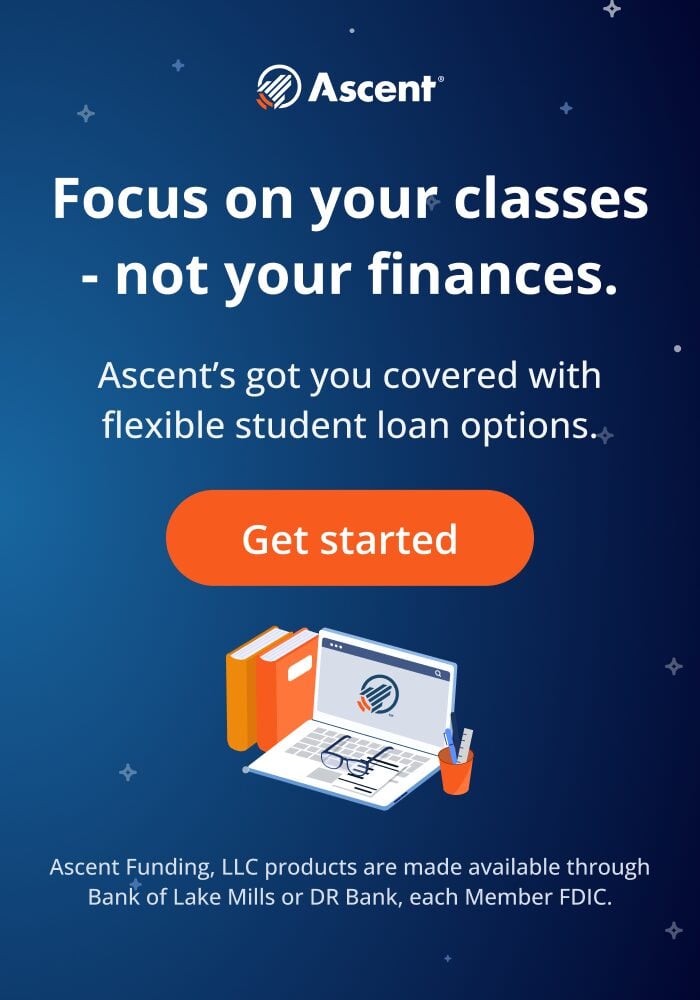529 plans are a type of tax-advantaged, custodial savings plan designed to help families nationwide cover education-related costs. They are also known as qualified tuition programs or Section 529 plans. Millions of families across America enroll in this plan for the many benefits it offers. However, as with any type of financial plan, it has a few downsides as well. Before discussing 529 plans pros and cons, it helps to first understand how these plans work.
What is a 529 Plan? How does it work?
A 529 plan is a type of savings plan that’s intended specifically for families to save money to pay for education. One of the 529 advantages is the generous tax breaks offered if the funds are used for the intended purpose. But these tax benefits become void if the funds are used for non-educational purposes.
Anyone can open a 529 account but not in their own name. These are essentially custodial accounts. Parents or grandparents typically open the accounts on behalf of a child or grandchild.
The person who opens the account is the custodian of the account. The person in whose name the account is opened is the account beneficiary. The account custodian manages the funds on behalf of a minor beneficiary. After the beneficiary turns 18, they can assume control over the account. Regardless of who’s controlling the account, the terms and conditions remain the same. You can only use funds for qualifying education expenses.
529 Contributions
There’s no annual contribution limit on a 529 account. But, some states put a cap on the total amount that can be held in an account. These limits vary among states, ranging from about $235,000 to over $525,000. Other rules, fees, and terms of 529 plans vary from state to state.
Any money that’s deposited into a 529 account grows on a tax-deferred basis. Withdrawals are tax-free if the funds are used for qualified education expenses as defined by the IRS. Some states offer additional tax deductions on contributions.
529 plans were originally intended to be used only to cover the cost of postsecondary education. In 2017, the program was expanded to include K – 12 education costs. Two years later, it further expanded to include apprenticeship programs. These expansions have contributed to the list of 529 advantages as they make the plan more flexible.

A look at 529 plans pros and cons
Despite its many benefits, these savings plans may not be right for all families.
This detailed look at 529 pros and cons will help you determine if this is the right choice for you.
529 Advantages
1. Tax-free growth
This is among the most notable of all 529 advantages. Any money deposited in a 529 account grows on a tax-deferred basis. Withdrawals from the account are exempt from state and federal taxes provided that the funds are used for qualified education expenses. This can be life-changing for a family struggling to save for college.
Qualified expenses include college or vocational school tuition and fees, books and school supplies, student loan payments, and some room and board costs. It also includes the cost of special needs and accessibility equipment for students. Up to $10,000 can be used towards K-12 tuition per year.
2. Low opening amounts
One of the 529 advantages is the fact that you don’t need to have a large amount of cash to start an account. Families can establish a 529 account starting with as little as $15 to $25. This varies among states. This low opening amount makes the program easily accessible to everyone regardless of income. These smaller contributions add up over the years. By the time the beneficiary comes of adult age, they will see the benefits.
3. Low maintenance
It doesn’t take a whole lot of time to either open or maintain a 529 account. You can open an account online in less than 10 minutes. Every state has its own 529 program. Just search for the 529 plan of your state, enter your details, and deposit the starting minimum – that’s it! Another alternative is to go through a licensed financial advisor.
Once you’ve established the account, you can either manage it manually or set it on automatically. For manual management, you’ll have to remember to deposit the funds every month. For automatic management, link the 529 account to your bank account or payroll deduction plan. The money is deducted automatically from your bank account and transferred to your 529 account on the set date every month.
4. High contribution limits
529 plans have no annual contribution limits. That means you can contribute as much cash as you want and can afford to. There are certain provisions to this feature though.
Contributions to 529 accounts are completed gifts for federal tax purposes. From 2022, up to $16,000 per donor, per beneficiary, is eligible for the annual gift tax exclusion. You will have to file a gift tax if your contributions exceed $16,000. This amount will be counted against your lifetime gift and estate tax exemption.
Every state sets its own aggregate limits on 529 plans. This generally ranges from about $235,000 to $529,000. Check your state’s maximum limit so you can plan accordingly.
5. Favorable financial aid treatment
A few parental assets and types of retirement accounts can prevent a student from qualifying for federal financial aid. However, one of the 529 advantages is that it has little to no impact on a student’s financial aid eligibility. These accounts are parental assets and are not counted as income on the FAFSA (Free Application for Federal Student Aid). This can make a significant difference if the funds from the 529 account will cover only a small portion of the total cost of college.
6. Fair amount of flexibility
Families can establish a 529 plan in any state, regardless of which state they reside in or where their child will attend college. This allows you to open an account that offers the best 529 advantages for you. The fees, limits, and other terms of 529 programs differ from one state to another. It’s worth spending some time exploring the various states’ programs and their features. Investing in a good program could put a lot more money into the account by the time your child is ready for college.
529 Disadvantages
1. Limited investment options
When you open a 529 account, you can select from a range of investment options offered by the program. Your choices will determine how much interest you earn on your contributions to the account. The one big downside of 529 plans is that there are no options for self-directed investments. This limits your investment options to only what’s offered within the program.
2. Penalty for non-qualified withdrawals
Tax benefits on 529 plans apply strictly to withdrawals made toward qualified education costs. The list of qualified expenses is very specific. Withdrawals made toward non-qualified expenses are subject to income tax. In addition, you will incur a 10% penalty on the earnings. The penalty may be waived under certain circumstances, including if the beneficiary attends a US Military academy, gets a scholarship, becomes disabled, or dies.
3. Relatively high fees
529 plans have similar structures to mutual funds. However, 529 plans have slighter higher fee rates as compared to mutual funds. Although the difference is marginal, it does add up. This particular payment process can sometimes be a deal-breaker for families on the fence.
4. Not all states offer tax benefits
Most states offer tax breaks on 529 plans but not all do. Depending on where you live, you may not be eligible for tax benefits on your contributions. You can work around this however by opening an account in another state that does offer tax breaks. Before you enroll in your state’s 529 program, make sure to check that you will get this important 529 advantage. If your state doesn’t offer this benefit, look for another state that does.
Is A 529 Savings Plan Right for You?
529 savings plans can be an effective way to save towards higher education but it may not be the best option for all families. Every family has their unique financial circumstances, commitments, and long-term goals. It’s important to weigh 529 plans pros and cons carefully before deciding whether this is the right option for you. Create a budget factoring in your family income and cost of living. Also, consider your retirement plans and long-term financial goals. This will help you determine how much you can afford to contribute to a 529 account.
When making this decision, it may help to also explore a few alternatives to 529 plans such as Savings Accounts, Roth IRAs, Coverdell Education Savings Account, and Custodial Accounts (UGMA and UTMA)
Use College Raptor to discover personalized college matches, cost estimates, acceptance odds, and potential financial aid for schools around the US—for FREE!
| Lender | Rates (APR) | Eligibility | |
|---|---|---|---|
 |
5.34%-15.96%* Variable
3.99%-15.61%* Fixed
|
Undergraduate and Graduate
|
VISIT CITIZENS |
 |
4.92% - 15.08% Variable
3.99% - 15.49% Fixed
|
Undergraduate and Graduate
|
VISIT SALLIE MAE |
 |
4.50% - 17.99% Variable
3.49% - 17.99% Fixed
|
Undergraduate and Graduate
|
VISIT CREDIBLE |
 |
6.00% - 13.75% Variable
3.99% - 13.75% Fixed
|
Undergraduate and Graduate
|
VISIT LENDKEY |
 |
5.50% - 14.56% Variable
3.69% - 14.41% Fixed
|
Undergraduate and Graduate
|
VISIT ASCENT |
 |
3.70% - 8.75% Fixed
|
Undergraduate and Graduate
|
VISIT ISL |
 |
4.99% - 16.85% Variable
3.47% - 16.49% Fixed
|
Undergraduate and Graduate
|
VISIT EARNEST |
 |
5.00% - 14.22% Variable
3.69% - 14.22% Fixed
|
Undergraduate and Graduate
|
VISIT ELFI |











Many of the cons you mention are true, but are often overcome by the pros. For instance, yes there are fees, but because of the tax breaks, you actually make out in the positive compared to mutual funds.
Other perceived problems like hard caps are likely not a real issue as there is little reason to save more than $300-$500k for typical colleges. The flexibility issue can be mitigated by taking a small penalty on any tax advantaged earnings if your child does not end up going to college.